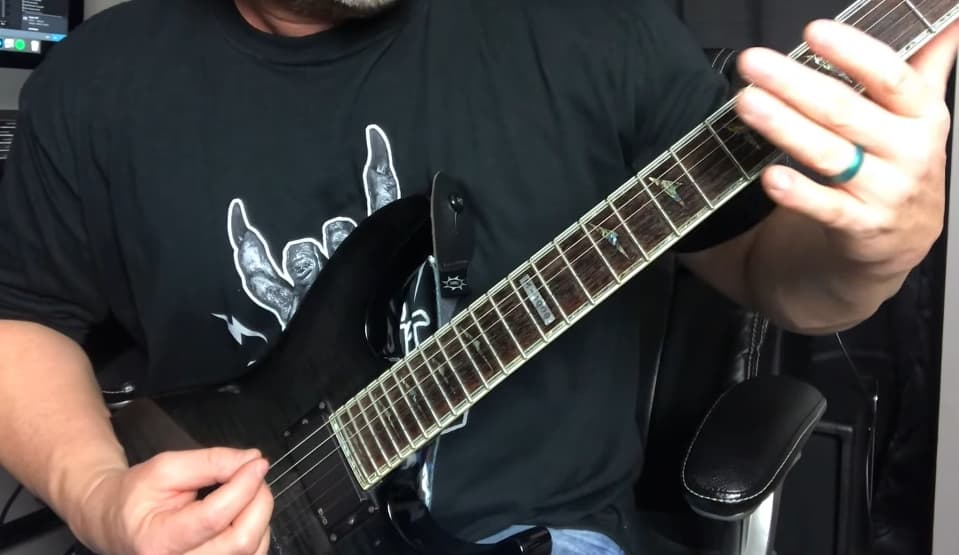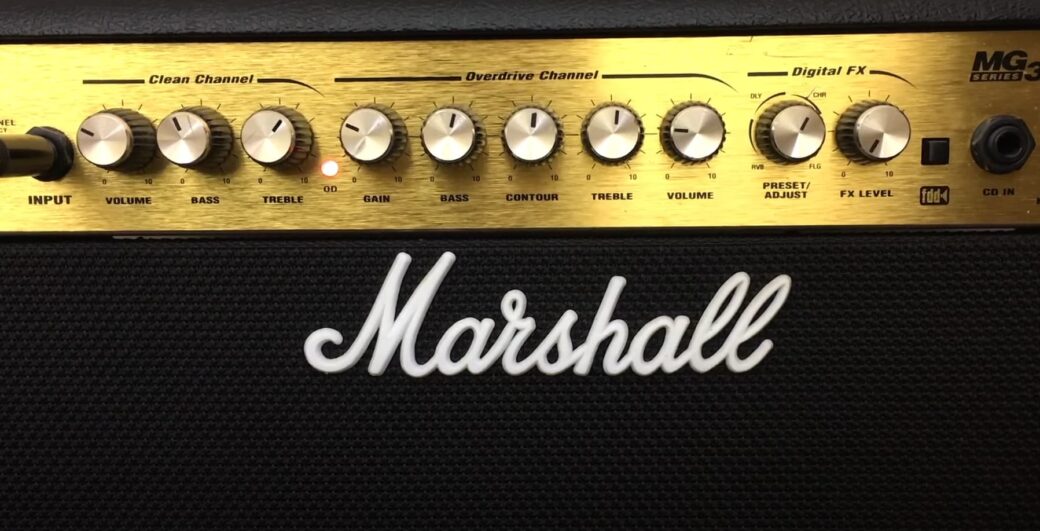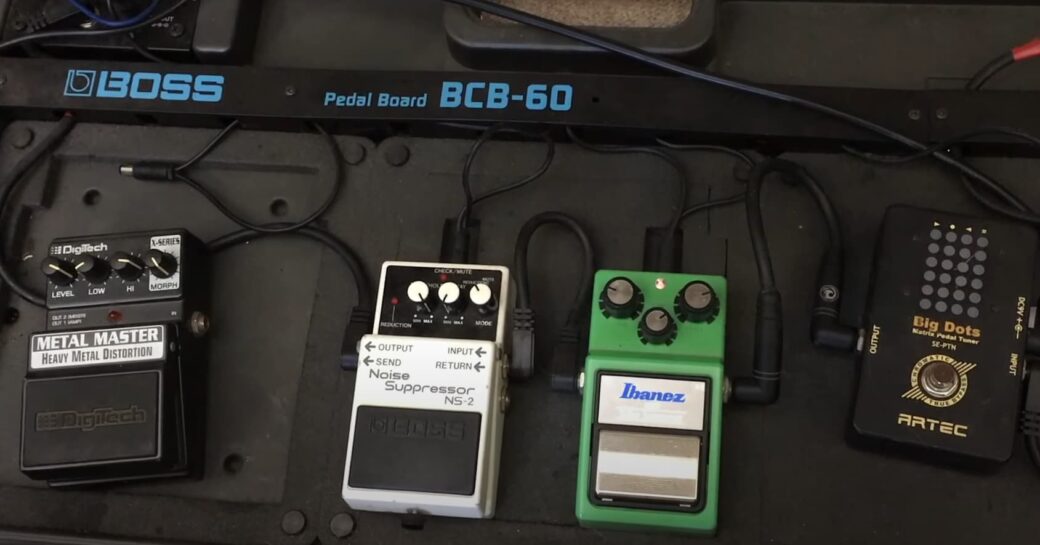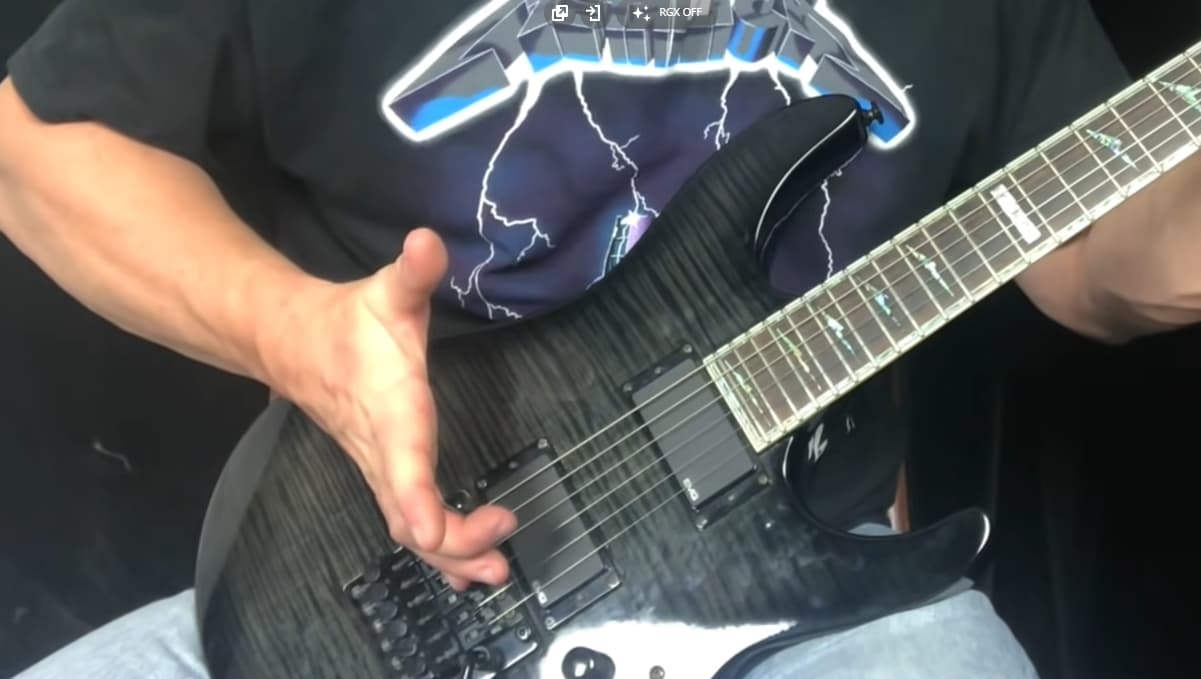Heavy metal music is a genre of rock music that developed in the late 1960s and early 1970s.
It is characterized by aggressive, driving rhythms, heavy guitar riffs, and often distorted vocals.
If you’re interested in learning how to play heavy metal music, there are a few things you’ll need to do:
- First, you’ll need to find a band or artist that you enjoy and start listening to their music;
- Pay attention to the way the guitars are played and the rhythm of the drums;
- Try to find a style that you like and identify with;
Are you looking to learn how to play heavy metal music? If so, you have come to the right place! In this blog post, we will discuss the basics of playing metal music. We will cover everything from choosing the right equipment to creating your heavy metal tunes. So, whether you are a beginner or a seasoned pro, this blog post has something for you!
What Is Heavy Metal Music?
Metal music is a broad genre. The style embraces party anthems from ’80s glam metal bands like Motley Crue and Poison, the relentless drive of speed, and thrash metal rockers like Metallica, Sepultura, and Pantera, as well as macabre, sludgy tones of black metal and doom metal. If you’re a metal guitarist looking to enhance your sound, you might want to consider investing in the best delay pedal for metal.
The bands were linked by a guitar-driven rock format, backed by a strong rhythm section that included bass and drums, and fronted by a lead singer whose vocals frequently represented the sound of the instruments.
Heavy metal has a lot of heavy lyrical content. The lyrics of heavy metal songs may be celebratory, reflective, and even inspirational, but they are frequently characterized by aggression, dissatisfaction, and rebellion against societal norms.
Heavy metal music is typically played with electric guitars, bass guitars, and drums. The instruments are amplified to high volumes and the sound is often distorted.
The fast tempos, loud volume, and aggressive lyrics of heavy metal can be overwhelming for some listeners. However, for fans of the genre, this is part of the appeal.
Metal was frequently targeted. Many heavy metal bands’ lyrics and visual components, such as long hair, dark clothing, and macabre imagery, made the genre a lightning rod for parents, watchdog organizations, and even government officials who have sought to limit and even outlaw heavy metal music.
It’s a lifestyle to be in heavy metal. Heavy metal fans, commonly known as “metalheads”, have only strengthened their devotion in response to anti-heavy metal legislation.

Characteristics Of Heavy Metal Music
Heavy metal music is characterized by its aggressive, driving sound. It often features distorted guitars and pounding drums. The songs are typically fast-paced and energetic. Heavy metal lyrics often deal with dark or violent subject matter. If you’re a fan of heavy metal, you may be interested in checking out MusicProfy, a website dedicated to all things music-related.
The heavy metal subculture is closely associated with hard rock music. Fans of heavy metal music are known for their dedication to the genre. They often dress in black clothing and wear body piercings and tattoos. Many fans of heavy metal music also enjoy attending live concerts.
If you’re interested in playing heavy metal music, there are a few things you should keep in mind. First, you’ll need to have a good understanding of basic guitar chords and scales. You’ll also need to be able to play fast and accurately. Additionally, it’s important to have a good sense of rhythm.
The sound of heavy metal music is defined by a variety of features, including:
- Heavy metal’s origins can be traced to the British Invasion, in which one or two guitars, a bass, and a drum kit were common. Heavy metal vocalists, unlike those of the British Invasion, rarely played an instrument. James Hetfield sang and played rhythm guitar for Metallica; he was not a member of the band;
- Metal songs are frequently rooted in dark themes such as fear, mistrust, paranoia, fury, or sadness, all of which are linked to the music’s early blues roots by the British Invasion. The lyrical content, on the other hand, was generally determined by the subgenre to which a metal band belonged. Death metal and black metal bands focused on dark themes or grim ideas while pop-metal groups like Van Halen and Def Leppard concentrated on fun and the rock ‘n’ roll lifestyle;
- The power of the guitar’s sound, as well as its capacity to distort and change it, is at the heart of heavy metal. The vocals and rhythm section work in tandem to enhance and enhance the importance of the guitar in metal;
- In the early days of heavy metal, the music’s volume could easily overpower most sound systems and drown out vocals. The voice of a strong singer with a durable lung capacity, like as Robert Plant from Led Zeppelin, Ozzy Osbourne from Black Sabbath, or Rob Halford from Judas Priest, may be heard over the sonic explosions and serves as an example for future metal vocalists. Vocal styles include shouting, growling, shrieking, and rapping; the power of those voices is what unifies them;
If you’re not sure where to start, there are several heavy metal guitar instructional books and DVDs available. These can help you learn the basics of playing heavy metal music. Additionally, there are many online lessons and forums where you can get tips and advice from other players.

Heavy Metal Subgenres
There are many subgenres of heavy metal music, each with its unique style and sound. Some of the most popular subgenres include:
- Death metal is characterized by its aggressive sound and lyrics that often deal with topics such as death and violence;
- Black metal is a darker form of heavy metal that often features Satanic or pagan themes in its lyrics and artwork;
- Thrash metal is a fast-paced form of heavy metal that combines elements of punk rock;
- Doom metal is a slower, heavier form of heavy metal that often features dark, morbid themes in its lyrics and artwork;
- Power metal is a more upbeat form of heavy metal that often features fantasy or science fiction themes in its lyrics and artwork;
If you’re interested in playing heavy metal music, it’s important to familiarize yourself with the various subgenres so that you can find the style that best suits your interests and skills. There are many great bands within each subgenre, so be sure to explore as much as you can to find the music that you love.
Your First Heavy Metal Guitar Lessons
Reading Guitar Tabs
Guitar tabs are a simple way to notate guitar music. They are easy to read and understand, making them perfect for beginners. In a tab, you will see six lines that represent the six strings on your guitar. The thickest string is the low E string and the thinnest string is the high E string.
To read a tab, simply start from the left and play each note indicated by the numbers on the lines. For example, if you see an “11” on the Low E string’s line, it means you should play the 11th fret of that string. If there is no number indicated, it means you should play an open string (a string without any fingers pressed down).
Learn The Basics Of Rhythm
To play heavy metal music, you need to have a strong grasp of rhythm. This means being able to keep time and stay on beat while you are playing.
A good way to practice your sense of rhythm is by using a metronome.
A metronome is a device that produces a steady beat that you can play along with. By practicing with a metronome, you will be able to develop a better sense of timing and rhythm. You can find metronomes online or at your local music store.
Power Chords
Power chords are one of the most important elements of heavy metal guitar playing. A power chord is simply a two-note chord that is played on the lowest two strings of the guitar.
To play a power chord, place your first finger on the low E string at the first fret and your second finger on the A string at the second fret. You can then strum both strings to play the chord.
Power chords are usually played with distortion to create a heavier sound. Distortion is created by using an overdrive pedal or by turning up the gain knob on your amplifier.
Palm Muting and Tremolo Picking Techniques
One of the most important techniques for playing heavy metal music is palm muting. This technique involves using the side of your hand to mute the strings while you are playing. This will help to create a more aggressive sound.
To palm mute, simply place your hand on the bridge of the guitar and use your pinky finger to lightly touch the string that you are muted. Be sure not to press too hard, as this will cause the string to buzz. Experiment with different amounts of pressure until you find a sound that you like.
Tremolo picking is a fast picking technique that uses repeated strokes on one string. This creates a very intense and aggressive sound.

Guitar Riffs And Licks
Now that you know the basics of how to play a heavy metal song, it’s time to start learning some guitar riffs and licks. A good place to start is by learning the intro to Metallica’s “Enter Sandman”. This riff is classic heavy metal and will give you a good foundation for learning other riffs and licks.
Another great way to learn guitar riffs and licks is by watching YouTube videos. There are tons of great instructional videos out there that can teach you everything from simple power chords to complex solos.
Guitar Scales
To play heavy metal music, you need to be familiar with guitar scales. There are many different types of scales, but the most important ones for playing heavy metal are the minor pentatonic and major pentatonic scales. These two scales will give you the foundation you need to start shredding solos like a pro!
To learn these scales, it is best to find a guitar teacher or take some online guitar lessons. Once you have learned the basic shapes of these scales, practice them every day until they become second nature. Then, you can start adding in some embellishments and techniques to make your playing even more intense!
Improvisation
It is also key in playing heavy metal music. This means that you need to be able to play by ear and improvise your solos and licks. You can learn how to do this by transcribing solos from your favorite heavy metal songs and then practicing them yourself.
One of the best ways to become a better improviser is to jam with other musicians as much as possible. This will help you develop your style and sound, and it will also give you a chance to experiment with different techniques.
FAQ
How do you play metal music?
Playing metal music is all about creating a heavy, aggressive sound. Metal bands often use distorted guitar sounds and fast-paced drumming to create a sense of energy and excitement. If you’re interested in playing metal music, you’ll need to learn how to create these heavy sounds yourself.
One of the most important aspects of playing metal music is creating a good guitar tone. Most metal guitarists use distortion pedals to make their guitars sound heavier and more aggressive. Distortion pedals can be used to create a variety of different sounds, so experiment with different settings until you find a sound that you like.
Another important element of metal music is the drums. Metal drummers often play very fast, complex rhythms that help to drive the

Is heavy metal easy to play?
No, heavy metal is not easy to play. Metal music often requires fast fingerwork and precise timing. If you’re not used to playing this type of music, it can be quite challenging. However, if you’re willing to put in the time and effort, you’ll be able to learn how to play metal music.
One of the best ways to learn how to play metal music is by listening to metal bands and trying to mimic their sound. Listen to as much metal music as you can and pay attention to the way the guitarists create their tones and the drummers play their rhythms. Then, try to recreate these sounds yourself. With enough practice, you’ll be able to play metal music like a pro!
How do you play heavy metal leads?
Now that you know the basic elements of how to play a heavy metal song, it’s time to start learning some lead guitar. Leads are the guitar parts that stand out and are usually played by the lead guitarist. They can be fast and complex, or slow and emotional. Either way, they’re an important part of the heavy metal sound.
Here are some tips on how to play heavy metal leads:
- Start by practicing your scales. Good knowledge of scales will give you the foundation you need to create interesting lead parts;
- Learn how to use a variety of techniques, such as vibrato, slides, and bends. These will help you add expression to your playing;
- Listen to a lot of heavy metal music to get an idea of what kind of lead parts are commonly used. This will give you some inspiration for your playing;
- Experiment with different sounds and effects. Distortion and delay can be particularly effective for creating heavy metal leads;
Can you play metal songs without a pick?
Possibly, but it’s not recommended. A pick gives you more control over the sound of your instrument and allows you to play faster and more accurately. If you’re a beginner, it’s best to start with a few basic picks to get a feel for how they work.
There are many different types of metal music, from thrash metal to death metal. Each subgenre has its unique sound and style. As a general rule, the heavier the music, the more distorted the guitars will be. This is why most metal songs feature heavily distorted guitar tones.
What chords are used in heavy metal?
The chords used in heavy metal are typically power chords. Power chords are two-note chords that are played by barring the strings with your finger. They’re simple to play and sound great when distorted.
Most metal songs use standard tuning, which is E standard for electric guitars and D standard for acoustic guitars. However, some guitarists tune their instruments down to a lower tuning to get a heavier sound.
How long does it take to be a metal guitarist?
This is a difficult question to answer, as it depends on how much natural talent you have, and how much time and effort you’re willing to put in. If you’re just starting, it’s going to take longer than if you’ve been playing for years.
That being said, there are some basic things that you need to know before you can start playing metal guitar:
- Firstly, you need to have a good understanding of chords and scales. Without this foundation, it will be very difficult to play metal guitar;
- Secondly, you need to be able to play fast. The metal guitar is all about speed and power, so if you can’t play fast, it’s not going to sound good;
- Finally, you need to have good stamina. The metal guitar is very demanding on your fingers and your hands, so if you get tired easily, it’s not going to be enjoyable;

How do you play a metal riff?
One of the most important aspects of playing a metal riff is to make sure that you are using the correct picking technique. When you are using the down-up picking method, you will want to start with the downstroke on the thickest string. After you have played the downstroke, you will then want to play an upstroke on the next string. You will continue this pattern until you have reached the end of the riff.
Another important aspect of playing a metal riff is to use distortion. This will give your sound a more aggressive tone and make it easier to play fast passages. To create distortion, you will need to turn up the gain on your amplifier and use a pick with a hard attack.
How do you hold a metal pick?
When you are holding a metal pick, you will want to grip it with your thumb and first two fingers. You will want to hold the pick close to the point so that you can have more control over it. It is also important to keep your wrist loose when you are playing. This will allow you to play faster passages without losing accuracy.
